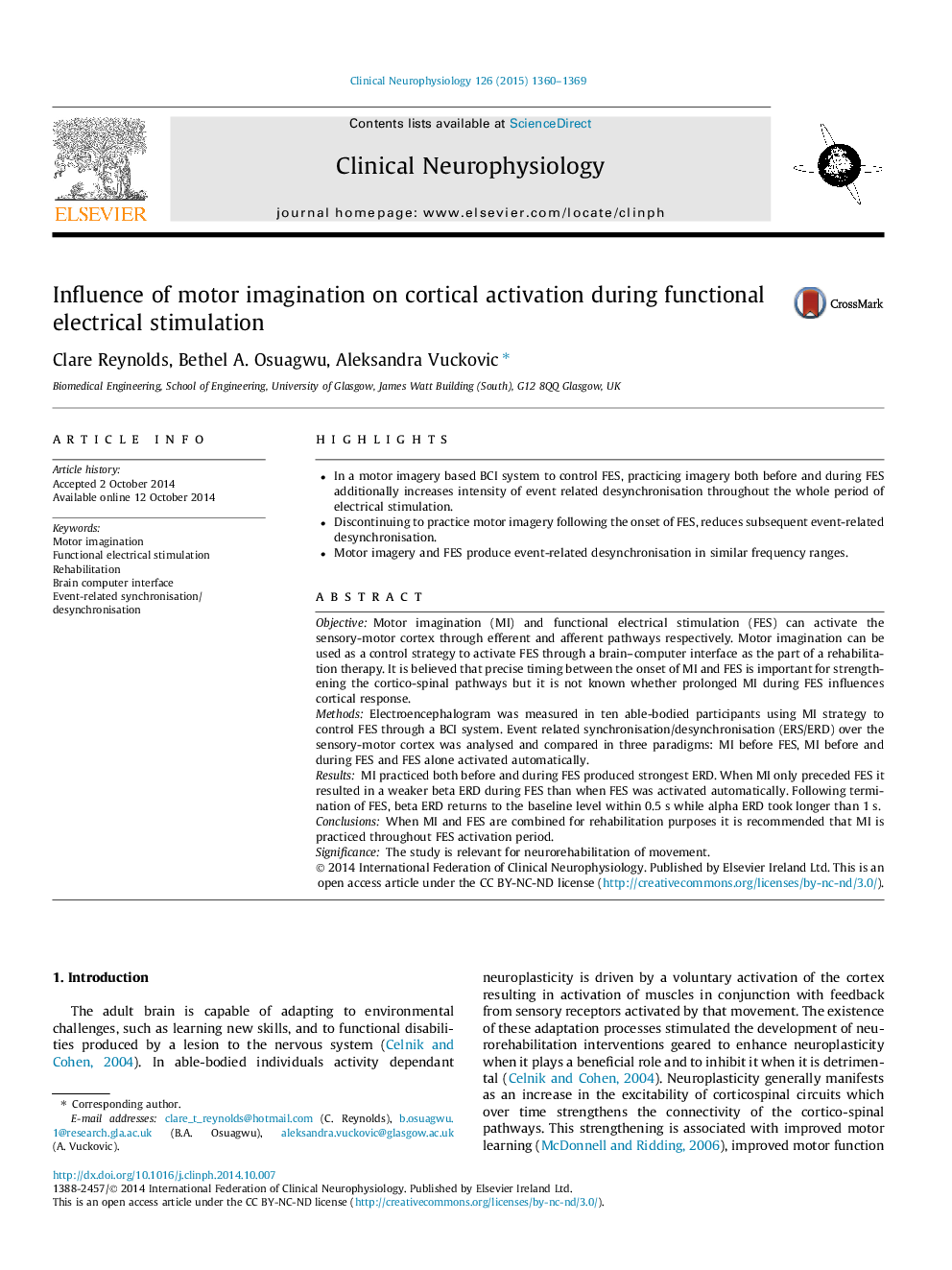| Article ID | Journal | Published Year | Pages | File Type |
|---|---|---|---|---|
| 6007726 | Clinical Neurophysiology | 2015 | 10 Pages |
â¢In a motor imagery based BCI system to control FES, practicing imagery both before and during FES additionally increases intensity of event related desynchronisation throughout the whole period of electrical stimulation.â¢Discontinuing to practice motor imagery following the onset of FES, reduces subsequent event-related desynchronisation.â¢Motor imagery and FES produce event-related desynchronisation in similar frequency ranges.
ObjectiveMotor imagination (MI) and functional electrical stimulation (FES) can activate the sensory-motor cortex through efferent and afferent pathways respectively. Motor imagination can be used as a control strategy to activate FES through a brain-computer interface as the part of a rehabilitation therapy. It is believed that precise timing between the onset of MI and FES is important for strengthening the cortico-spinal pathways but it is not known whether prolonged MI during FES influences cortical response.MethodsElectroencephalogram was measured in ten able-bodied participants using MI strategy to control FES through a BCI system. Event related synchronisation/desynchronisation (ERS/ERD) over the sensory-motor cortex was analysed and compared in three paradigms: MI before FES, MI before and during FES and FES alone activated automatically.ResultsMI practiced both before and during FES produced strongest ERD. When MI only preceded FES it resulted in a weaker beta ERD during FES than when FES was activated automatically. Following termination of FES, beta ERD returns to the baseline level within 0.5Â s while alpha ERD took longer than 1Â s.ConclusionsWhen MI and FES are combined for rehabilitation purposes it is recommended that MI is practiced throughout FES activation period.SignificanceThe study is relevant for neurorehabilitation of movement.
